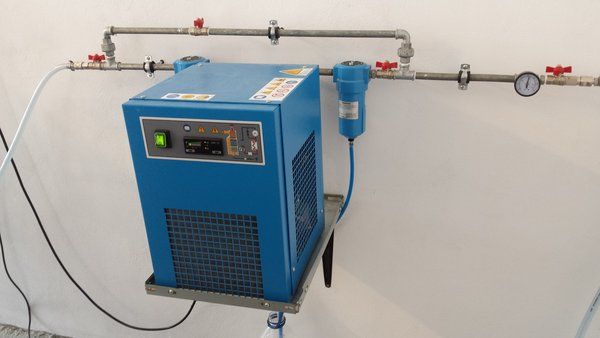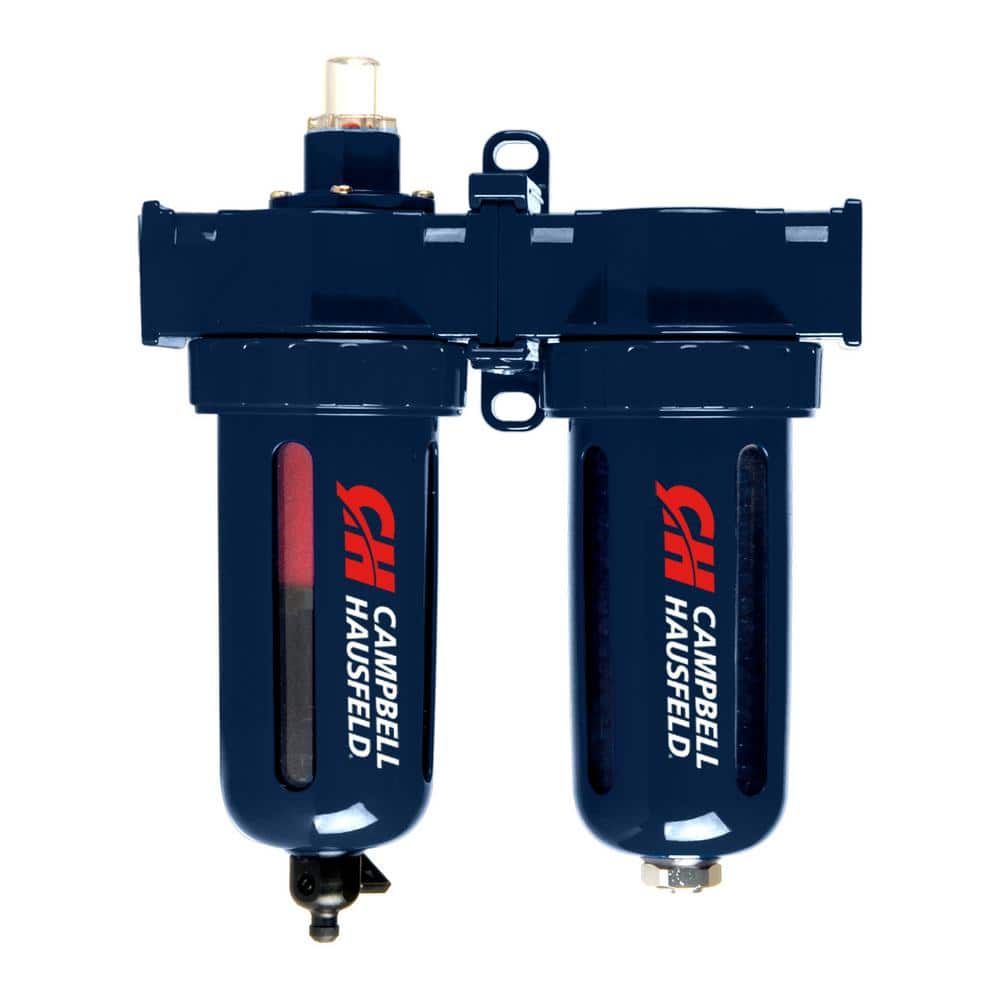An air compressor dryer removes moisture from compressed air. This process prevents corrosion and ensures efficient operation of pneumatic tools.
Air compressor dryers are essential for industries relying on compressed air systems. Moisture can lead to rust, equipment damage, and decreased efficiency. By eliminating excess water vapor, these dryers enhance the longevity of tools and machinery. They come in various types, including refrigerated, desiccant, and membrane dryers, each serving different applications and environments.
Selecting the right dryer not only boosts performance but also reduces maintenance costs. Understanding how these devices work and their importance can significantly impact production quality. Investing in a reliable air compressor dryer ensures optimal functionality and a safer working environment for operators.
Introduction To Air Compressor Dryers
Air compressor dryers are essential in many industries. They remove moisture from compressed air. This process protects equipment and improves efficiency. Let’s explore their role and types.
The Role Of Dryers In Air Compression
Dryers play a crucial role in maintaining air quality. Compressed air often contains moisture, dirt, and oil. This can lead to several issues:
- Corrosion of tools and equipment
- Reduced efficiency of air systems
- Increased maintenance costs
Using an air compressor dryer helps prevent these problems. It ensures clean, dry air for optimal performance.
Types Of Air Compressor Dryers
There are several types of air compressor dryers. Each type serves a specific purpose. Here are the main types:
| Type | Description | Advantages |
|---|---|---|
| Refrigerated Dryers | Cool compressed air to condense moisture. |
|
| Desiccant Dryers | Use desiccant materials to absorb moisture. |
|
| Membrane Dryers | Separate moisture using a membrane process. |
|
Choosing the right dryer is vital for your air system. Each type has unique benefits. Assess your needs carefully to make the best choice.
Why Dry Air Matters
Dry air is essential for the optimal performance of air tools. Moisture can create problems that affect both tools and projects. Understanding why dry air matters helps maintain equipment and improve results.
Effects Of Moisture On Air Tools
Moisture in compressed air can lead to several issues:
- Corrosion: Water can rust metal parts, reducing tool life.
- Ice Formation: Cold air can freeze moisture, blocking airflow.
- Clogging: Moisture can cause dirt and debris to stick in tools.
These problems lead to:
- Frequent repairs and maintenance.
- Increased downtime.
- Higher replacement costs.
Quality Of Output And Moisture Control
Dry air ensures high-quality results in projects. Moisture can negatively impact the following:
| Aspect | Effect of Moisture |
|---|---|
| Paint Finish | Causes runs and uneven texture. |
| Air Pressure | Fluctuates and causes inconsistent performance. |
| Tool Efficiency | Reduces power and speed. |
Maintaining dry air leads to:
- Better paint jobs.
- Consistent pressure for tools.
- Increased efficiency and productivity.
Investing in an air compressor dryer is crucial. It ensures dry air and protects your tools and projects.
Selecting The Right Dryer
Choosing the right air compressor dryer is crucial for your equipment. The right dryer ensures clean, dry air. This protects your tools and enhances performance. Let’s explore how to select the best dryer for your needs.
Assessing Your Air Quality Needs
Understanding your air quality needs is the first step. Consider these factors:
- Humidity levels: Measure the moisture in your air supply.
- Air usage: Identify how much air your system needs.
- Application type: Different applications require different air qualities.
High humidity can damage tools and products. Assess your environment carefully. Use a hygrometer for accurate readings. This will help you understand your specific requirements.
Comparing Dryer Technologies
Different dryer technologies serve different needs. Here’s a quick comparison:
| Dryer Type | Pros | Cons |
|---|---|---|
| Refrigerated Dryers |
|
|
| Desiccant Dryers |
|
|
| Membrane Dryers |
|
|
Evaluate these options based on your needs. Each type has its strengths and weaknesses. Choose wisely to ensure optimal performance.

Credit: www.air-compressor-guide.com
Refrigerated Vs. Desiccant Dryers
Choosing between refrigerated dryers and desiccant dryers is crucial for effective air compression. Both types serve the same purpose of removing moisture. Their methods and efficiency levels differ significantly. Understanding each can help you make an informed decision.
How Refrigerated Dryers Work
Refrigerated dryers cool the air to remove moisture. Here’s how they operate:
- Air Intake: Compressed air enters the dryer.
- Cooling Process: The air is cooled using a refrigerant.
- Condensation: Moisture condenses into water droplets.
- Separation: Water is drained away through a separator.
- Dry Air Output: The dry air is sent to your system.
These dryers are efficient for high flow rates. They maintain a consistent dew point. However, they may not be suitable for very low temperatures.
Advantages Of Desiccant Dryers
Desiccant dryers use materials to absorb moisture. This method offers several benefits:
- Low Dew Point: Achieves a lower dew point than refrigerated dryers.
- Versatile Use: Suitable for various industries like pharmaceuticals and food.
- Compact Size: Smaller footprint compared to refrigerated models.
- No Risk of Freeze: Works well in cold environments.
Desiccant dryers are ideal for sensitive applications. They ensure air quality is maintained at high standards.
| Feature | Refrigerated Dryers | Desiccant Dryers |
|---|---|---|
| Dew Point | Higher | Lower |
| Size | Larger | Compact |
| Temperature Tolerance | Limited | Excellent |
| Applications | General Purpose | Sensitive Industries |
Installation Tips
Proper installation of your air compressor dryer ensures efficient operation and longevity. Follow these tips for a successful setup.
Best Practices For Setup
Setting up your air compressor dryer correctly is essential. Here are some best practices:
- Choose the Right Location: Select a dry, well-ventilated area.
- Level the Unit: Ensure the dryer is on a flat surface.
- Maintain Distance: Keep space around the unit for airflow.
- Check for Vibration: Use rubber pads to reduce noise.
Follow these steps for a smooth installation:
- Disconnect the power supply before installation.
- Install the inlet and outlet pipes securely.
- Attach the drainage line properly.
- Connect the power supply and check for leaks.
Maintenance For Optimal Performance
Regular maintenance keeps your air compressor dryer running well. Follow these tips:
| Maintenance Task | Frequency |
|---|---|
| Check air filters | Monthly |
| Drain moisture from the tank | Weekly |
| Inspect hoses for wear | Every three months |
| Clean the exterior | As needed |
Follow these maintenance tips for optimal performance:
- Keep Filters Clean: This improves airflow and efficiency.
- Monitor Drainage: Prevent moisture buildup in the tank.
- Check for Leaks: Regularly inspect hoses and connections.
By following these installation tips, you ensure your air compressor dryer operates effectively.

Credit: www.homedepot.com
Energy Efficiency And Cost Savings
Air compressor dryers are crucial for reducing energy costs. They improve efficiency while ensuring high-quality air. Investing in energy-efficient models leads to significant savings.
Reducing Power Consumption
Air compressor dryers consume a lot of energy. Upgrading to energy-efficient models can drastically cut power use. Consider these benefits:
- Lower electricity bills
- Less energy waste
- Longer equipment lifespan
Here’s a quick comparison of energy consumption:
| Dryer Type | Power Consumption (kW/h) | Annual Cost ($) |
|---|---|---|
| Standard Dryer | 10 | $1,200 |
| Energy-Efficient Dryer | 6 | $720 |
Choose energy-efficient dryers for lower costs and reduced carbon footprint.
Roi Of Upgrading Your Dryer
Upgrading to an energy-efficient dryer has a strong return on investment (ROI). Here’s why:
- Immediate savings on energy bills
- Reduced maintenance costs
- Improved productivity due to fewer breakdowns
Calculate your potential savings:
- Initial investment: $2,000
- Annual savings: $480
- Payback period: 4.2 years
Investing in an energy-efficient air compressor dryer pays off quickly.
Troubleshooting Common Issues
Air compressor dryers are essential for maintaining air quality. Problems can arise, affecting performance. Identifying and fixing these issues is crucial for efficiency.
Identifying Performance Problems
Start by observing the dryer. Look for signs of trouble. Common performance problems include:
- Increased moisture levels: Check for water in the air lines.
- Noisy operation: Listen for unusual sounds.
- Frequent cycling: Notice if the dryer turns on and off rapidly.
- Reduced airflow: Test if the airflow feels weak.
Use a pressure gauge to check system pressure. A drop in pressure indicates a possible issue. Regular maintenance helps identify these problems early.
Quick Fixes Vs. Professional Repairs
Some issues can be fixed quickly. Others may require professional help. Here’s a quick comparison:
| Issue | Quick Fix | Professional Repair |
|---|---|---|
| Clogged filter | Clean or replace filter | N/A |
| Noisy operation | Check and tighten loose parts | Replace damaged components |
| Moisture buildup | Drain the tank | Inspect for leaks |
| Frequent cycling | Check thermostat settings | Inspect electrical components |
Start with quick fixes. If problems persist, call a professional. Regular checks save time and money.
Future Of Air Treatment
The future of air treatment is bright and full of promise. Innovations in technology and a focus on sustainability drive change. Air compressor dryers are evolving. They are becoming more efficient, effective, and environmentally friendly.
Innovations In Dryer Technology
New technologies are reshaping air compressor dryers. Here are some key innovations:
- Smart Controls: These systems optimize energy use.
- Advanced Filtration: Removes even the smallest particles.
- Heat Recovery Systems: Reuses waste heat for energy savings.
- Modular Designs: Easy to upgrade and maintain.
These innovations lead to better performance. They reduce downtime and increase reliability.
Sustainability In Air Compression
Sustainability is a key focus in air treatment. Manufacturers aim to reduce energy consumption and waste.
Here are some sustainable practices:
- Use of energy-efficient components.
- Recycling materials in production.
- Implementing eco-friendly refrigerants.
These practices lower environmental impact. They also save costs for businesses.
| Technology | Benefits |
|---|---|
| Smart Controls | Increases efficiency, reduces costs. |
| Advanced Filtration | Improves air quality, protects equipment. |
| Heat Recovery | Reduces energy waste, lowers bills. |
| Modular Designs | Simplifies upgrades, enhances flexibility. |
Embracing these trends will enhance air treatment systems. They will become vital for industries worldwide.

Credit: airhorse8888.en.made-in-china.com
Frequently Asked Questions
What Is An Air Compressor Dryer?
An air compressor dryer is a device that removes moisture from compressed air. It helps prevent corrosion and damage in pneumatic systems. By drying the air, it ensures optimal performance and longevity of tools and machinery. Proper maintenance of the dryer is essential for efficient operation.
Why Do I Need An Air Dryer?
An air dryer is crucial for protecting your equipment. Moisture in compressed air can cause rust and reduce efficiency. It also helps improve the quality of your end products. Investing in an air dryer extends the lifespan of your tools and reduces maintenance costs.
How Does An Air Compressor Dryer Work?
Air compressor dryers use different methods to remove moisture. Common types include refrigerant and desiccant dryers. Refrigerant dryers cool the air to condense moisture, while desiccant dryers absorb water vapor. Both methods ensure that the compressed air remains dry and suitable for various applications.
What Are The Types Of Air Compressor Dryers?
There are two main types: refrigerant and desiccant dryers. Refrigerant dryers are more common and cost-effective. Desiccant dryers are ideal for applications requiring very dry air. Each type has its benefits, so choosing the right one depends on your specific needs.
Conclusion
Choosing the right air compressor dryer enhances efficiency and prolongs equipment life. It’s vital to understand your specific needs. Consider factors like capacity, type, and maintenance. A well-selected dryer can lead to better performance and reduced costs. Invest wisely to ensure optimal results for your air compression system.

